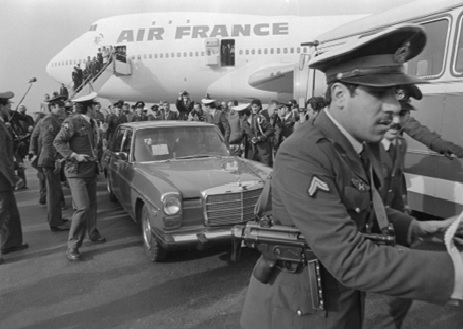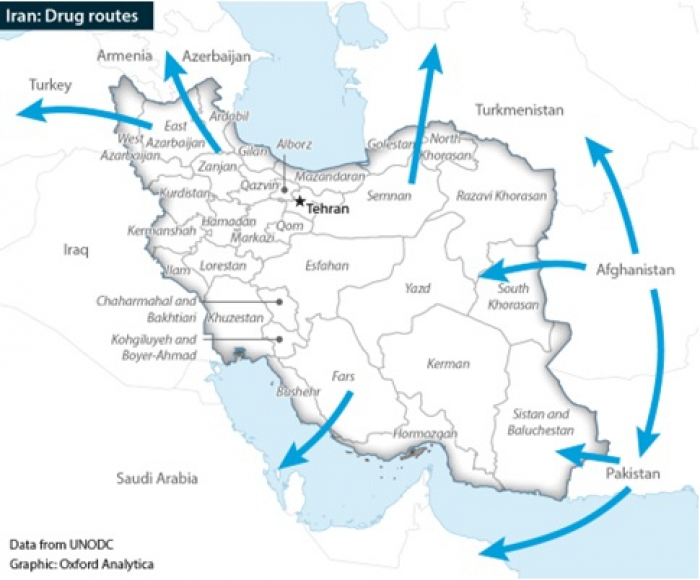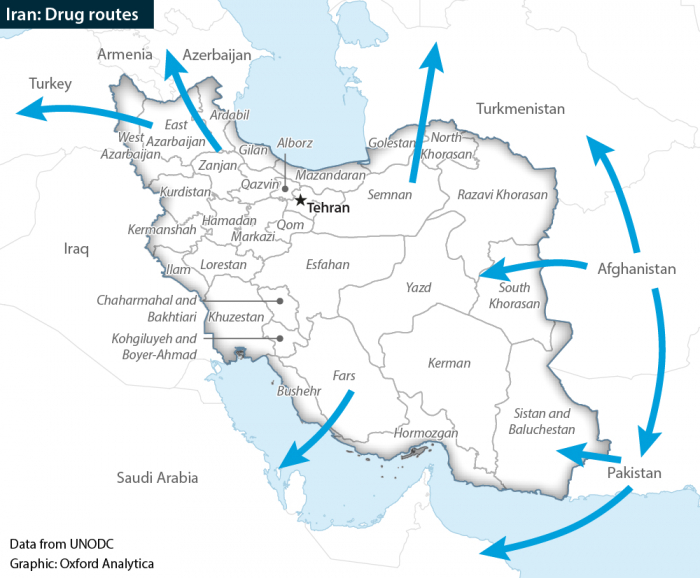One might question: What does the Islamic Republic of Iran imply by national security? What is the reason behind this ‘intolerance’?
Iran has been pursuing a policy of violating historical borders against Azerbaijan on military, diplomatic and information frontiers. One of the main reasons behind this continued activity is the position of the official circles in global drug trafficking. The Islamic Republic of Iran earns billions of dollars annually from global drug trafficking. This is not some biased claim made by some countries or circles. These are time-proven real facts.
In this regard, the false information Iran’s official and unofficial representatives spread about the placement of Zionists and Takfiris within the territories of Azerbaijan, attempts at causing confusion among ordinary citizens, military exercises by Iran’s political and military elite, the planned ( or desired at the very least ) support for Armenia can be considered a manifestation of the mentioned ‘intolerance’ and attempts at donning a legitimate disguise.
History will provide a better perspective. The new religious leaders came ( or were brought ) to power after the 1979 Islamic Revolution in Iran. They, in turn, established the ‘Sepah-e Pasdaran’ or the Islamic Revolutionary Guard Corps to ensure the security of the planned Islamic system and keep armed forces in check.

Picture 1. Ruhollah Khomeini arrives in Tehran from Paris (via Air France), 1979.
The IRI considered exporting the revolution model to neighbouring countries and regions a top priority for many years and this mission was directly carried out by the Guard Corps. The group has been continuing multi-purpose activities in Iraq, Syria, Lebanon, Yemen, Afghanistan, and others.
Ensuring the sustainability of this policy required mammoth amounts of financial resources, which led to establishing strategic economic support or the organization within the country. The IRGC earns billions of US dollars every year from illegal drug trafficking, export, and transportation and this ‘dirty money’ has been the group’s main source of income. Crowned with the ‘sacred duty’ by the supreme religious leader after the Islamic Revolution, the Sepah forces expanded their stamping ground within the country and now keep the country’s water, air, and land borders under control. So, it comes as no coincidence that it is the Revolutionary Guard Corps that sees the opening of the Zangazur Corridor as a ‘national security threat’ and conducts military exercises on the state border with Azerbaijan.
The US Treasury announced in 2012 that the IRGC General oversaw Afghan heroin trafficking through Iran. The press release read that General Gholamreza Baghbani, an IRGF Qods Force chief in Zahedan in south-eastern Iran, allowed Afghan narcotics traffickers to smuggle heroin to third countries through Iran and facilitate shipments of opium into Iran.

Picture 2. Cooperation model between Afghanistan and Iran
These actions are truly unworthy of the name of an Islamic Republic. International Organizations have also repeatedly brought up the facts confirming these actions. The United Nations Office on Drugs and Crime reports that the following map shows the drug routes exported to Europe via Irani territory from different directions. This once again confirms that the Islamic Republic of Iran ran illegal drug trafficking on the northern borders through Armenia and the occupied territories of Karabakh.

Picture 3. Drug routes within the Islamic Republic of Iran
President of Azerbaijan Ilham Aliyev also expressed his views on the issue at the meeting of the Council of Heads of States of the CIS on 15 October 2021. During his speech, the President of Azerbaijan noted that the 130-kilometer section of the state border between Azerbaijan and Iran – has been under Armenian control for about 30 years – was a drug trafficking route from Iran to Europe through Armenia.

Picture 4. Khudafarin Bridges, which were out of Azerbaijan's control for many years, and became a route for transporting drugs through Iran via Karabakh to Europe
IRGC attached to the supreme religious leader of Iran has been continuing the ‘demonstration of power’ on the border with Azerbaijan, especially on the banks of the Aras River, which has always had an important place in the history of Azerbaijanis. The same is echoed in the Iranian media. The regime, engulfed in serious protests within the country, finds it vital to divert citizens’ attention from domestic social and political issues and look for the ‘enemy’ outside the country.
Thus, the outcome of the Second Karabakh War has deprived the IRGC (Sepah), who protects the security of the ruling regime in the IRI and ensures its activities abroad, from its main source of income. As Azerbaijan restored control over the state borders, it pushed the dirty cooperation to be confined along the 41 km-state borders between Armenia and Iran. However, fearing that the opening of the Zangazur Corridor will expose the illegal drug trafficking between Armenia and Iran, the regime has declared the issue its ‘red line’.
It seems the diminished incomes from drug trade is considered a national security threat in Iran.
To be continued…
















































